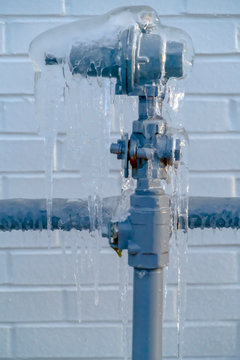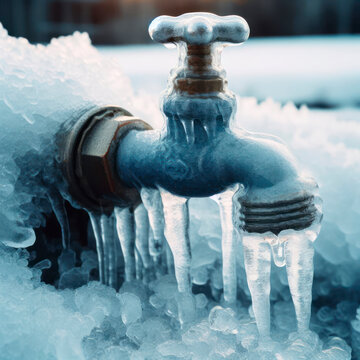Protecting Against Frozen Plumbing in Winter: Expert Strategies
Protecting Against Frozen Plumbing in Winter: Expert Strategies
Blog Article
What are your concepts about Winter Plumbing Precautions: Preventing Frozen Pipes?

Winter can damage your plumbing, particularly by freezing pipes. Here's exactly how to prevent it from occurring and what to do if it does.
Introduction
As temperature levels drop, the danger of frozen pipelines rises, potentially bring about pricey repair work and water damages. Recognizing how to stop frozen pipes is essential for homeowners in cool climates.
Prevention Tips
Insulating prone pipes
Cover pipes in insulation sleeves or utilize heat tape to shield them from freezing temperature levels. Focus on pipelines in unheated or outside areas of the home.
Heating strategies
Keep indoor areas sufficiently heated up, particularly locations with plumbing. Open up closet doors to enable cozy air to distribute around pipelines under sinks.
How to recognize frozen pipes
Seek decreased water flow from faucets, uncommon smells or sounds from pipelines, and visible frost on revealed pipes.
Long-Term Solutions
Structural modifications
Take into consideration rerouting pipelines far from outside wall surfaces or unheated locations. Add additional insulation to attic rooms, cellars, and crawl spaces.
Updating insulation
Purchase premium insulation for pipelines, attic rooms, and walls. Proper insulation helps maintain consistent temperature levels and lowers the threat of icy pipes.
Safeguarding Exterior Pipes
Garden pipes and outdoor taps
Disconnect and drain pipes garden hose pipes prior to wintertime. Mount frost-proof faucets or cover outdoor faucets with shielded caps.
Comprehending Icy Pipes
What triggers pipes to freeze?
Pipelines freeze when subjected to temperature levels below 32 ° F (0 ° C) for prolonged durations. As water inside the pipelines freezes, it broadens, putting pressure on the pipeline wall surfaces and potentially causing them to rupture.
Dangers and problems
Icy pipelines can lead to supply of water interruptions, building damages, and pricey repairs. Ruptured pipelines can flooding homes and trigger substantial architectural damage.
Signs of Frozen Pipes
Recognizing frozen pipes early can prevent them from breaking.
What to Do If Your Pipelines Freeze
Immediate actions to take
If you suspect icy pipes, keep taps available to alleviate stress as the ice melts. Make use of a hairdryer or towels soaked in hot water to thaw pipelines slowly.
Verdict
Avoiding icy pipes calls for positive procedures and fast reactions. By recognizing the causes, indicators, and preventive measures, house owners can protect their plumbing throughout winter.
5 Ways to Prevent Frozen Pipes
Drain Outdoor Faucets and Disconnect Hoses
First, close the shut-off valve that controls the flow of water in the pipe to your outdoor faucet. Then, head outside to disconnect and drain your hose and open the outdoor faucet to allow the water to completely drain out of the line. Turn off the faucet when done. Finally, head back to the shut-off valve and drain the remaining water inside the pipe into a bucket or container. Additionally, if you have a home irrigation system, you should consider hiring an expert to clear the system of water each year.
Insulate Pipes
One of the best and most cost-effective methods for preventing frozen water pipes is to wrap your pipes with insulation. This is especially important for areas in your home that aren’t exposed to heat, such as an attic. We suggest using foam sleeves, which can typically be found at your local hardware store.
Keep Heat Running at 65
Your pipes are located inside your walls, and the temperature there is much colder than the rest of the house. To prevent your pipes from freezing, The Insurance Information Institute suggests that you keep your home heated to at least 65 degrees, even when traveling. You may want to invest in smart devices that can keep an eye on the temperature in your home while you’re away.
Leave Water Dripping
Moving water — even a small trickle — can prevent ice from forming inside your pipes. When freezing temps are imminent, start a drip of water from all faucets that serve exposed pipes. Leaving a few faucets running will also help relieve pressure inside the pipes and help prevent a rupture if the water inside freezes.
Open Cupboard Doors
Warm your kitchen and bathroom pipes by opening cupboards and vanities. You should also leave your interior doors ajar to help warm air circulate evenly throughout your home.

We were shown that article about How to Prevent Your Pipes From Freezing from an acquaintance on another blog. Liked our posting? Please share it. Let someone else check it out. We cherish your readership.
Request Service Report this page